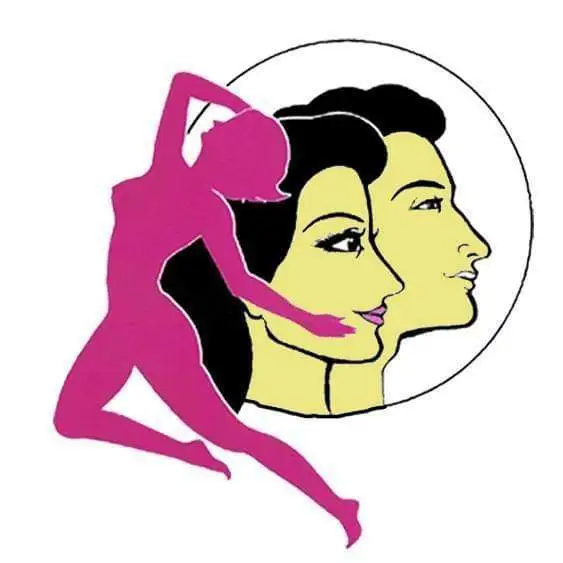Faq
Look Young Laser & Cosmetic Surgery Center
Look Young Laser & Cosmetic Surgery is a leading center specializing in cosmetic procedures and treatments. Our center is dedicated to helping patients achieve their desired aesthetic goals and enhancing their natural beauty. We offer a wide range of services, including laser treatments, facial rejuvenation, body contouring, hair restoration, breast augmentation, and non-surgical procedures such as Botox and fillers.
At Look Young Laser & Cosmetic Surgery, we understand that our patients have various questions and concerns about our services. Here are answers to some frequently asked questions (FAQ) to provide clarity and address common queries:


Look Young Laser & Cosmetic Surgery offers a wide range of cosmetic procedures, including laser treatments, facial rejuvenation, body contouring, hair restoration, breast augmentation, and non-surgical treatments like Botox and fillers. Our team of skilled professionals is dedicated to helping patients achieve their desired aesthetic goals.
Our clinic boasts a team of highly experienced doctors who specialize in various cosmetic procedures. They have undergone extensive training and have years of experience in their respective fields. They stay up-to-date with the latest advancements in cosmetic surgery and use state-of-the-art techniques to deliver excellent results.
Yes, Look Young Laser & Cosmetic Surgery is committed to providing a safe and secure environment for our patients. We prioritize patient safety throughout every step of the treatment process. Our clinic follows stringent safety protocols, adheres to industry best practices, and maintains high standards of hygiene and cleanliness.
Laser treatment for dark circles is a non-invasive procedure that utilizes laser technology to address the underlying causes of dark circles under the eyes. It targets factors such as excess pigmentation, blood vessels, and collagen production to reduce the appearance of dark circles and improve the overall under-eye area.
Laser treatment works by delivering controlled beams of light energy to the targeted area under the eyes. These laser beams stimulate collagen production, target excess pigmentation, and improve blood vessel health, leading to a reduction in dark circles and a rejuvenated appearance.
Yes, laser treatment for dark circles is considered safe when performed by a qualified dermatologist or skincare professional. However, it's important to follow pre and post-treatment instructions and disclose any medical conditions or medications to ensure the safest and most effective treatment.
The duration of a laser treatment session for dark circles can vary depending on the individual and the specific laser technology being used. Typically, a session can take anywhere from 15 to 30 minutes, but this can vary based on the treatment plan and the extent of the dark circles.
Laser treatment for dark circles is generally well-tolerated, and most individuals experience minimal discomfort. Some people may feel a slight warming or tingling sensation during the procedure. Topical anesthesia or cooling methods may be used to enhance comfort during the treatment.
The number of laser treatment sessions required can vary depending on factors such as the severity of dark circles and the individual's response to treatment. Typically, multiple sessions are needed to achieve optimal results. Your dermatologist will create a personalized treatment plan and provide an estimate of the number of sessions required.
While laser treatment can provide long-lasting results, individual experiences may vary. The improvements achieved through laser treatment are generally durable, but factors such as aging, lifestyle, and genetics can influence the longevity of the results. Maintenance sessions may be recommended to sustain the desired outcome.
One of the advantages of laser treatment for dark circles is the minimal downtime. Many individuals can resume their regular activities immediately after the procedure. However, it's common to experience some mild redness or swelling in the treated area, which usually resolves within a few days.
Yes, laser treatment can be combined with other treatments for dark circles, such as topical creams, dermal fillers, or chemical peels. Combining different approaches may enhance the overall results and address various aspects of dark circles.
While side effects are rare, some individuals may experience temporary redness, swelling, or mild discomfort in the treated area. These effects typically subside within a few days. It's important to follow post-treatment care instructions provided by the dermatologist to minimize any potential side effects.
Ideal candidates for laser treatment are individuals with dark circles caused by factors such as excess pigmentation, blood vessel dilation, or thinning skin. A consultation with a dermatologist will help determine if laser treatment is suitable based on the individual's skin type, overall health, and specific concerns.
Yes, the results of laser treatment for dark circles are generally natural-looking. Laser technology allows for precise targeting of the underlying causes, resulting in a more balanced and rejuvenated appearance. The improvements are typically subtle, enhancing the natural beauty of the under-eye area.
There is no specific age to start using anti-aging treatments. The ideal time to begin anti-aging measures varies depending on individual factors such as genetics, lifestyle, and skin condition. However, it is generally recommended to establish a good skincare routine in your 20s or 30s to prevent and minimize the early signs of aging.
Effective ingredients in anti-aging skincare products include retinol, hyaluronic acid, vitamin C, peptides, and antioxidants. These ingredients help to stimulate collagen production, hydrate the skin, reduce the appearance of wrinkles, and protect against environmental damage.
Yes, there are anti-aging treatments specifically formulated for sensitive skin. It is important to choose products and treatments that are gentle, hypoallergenic, and free of potential irritants. Patch testing and consulting with a skincare professional can help determine the best options for sensitive skin.
The timeline for seeing results from anti-aging treatments can vary depending on the specific treatment and individual factors. Some products and treatments may show noticeable improvements within a few weeks, while others may require several months of consistent use to achieve desired results.
Some anti-aging treatments may have mild side effects such as redness, irritation, or dryness, especially during the initial stages of use. These side effects are usually temporary and can be minimized by following proper usage instructions and gradually introducing new products or treatments into your routine.
Yes, anti-aging treatments can be combined with other skincare products. However, it is important to consider the compatibility of the products and avoid overloading the skin. Consulting with a skincare professional can help create a personalized routine that incorporates the right combination of products for your specific needs.
While anti-aging treatments can significantly improve the appearance of the skin and minimize the signs of aging, it is important to have realistic expectations. They can help reduce the appearance of fine lines, wrinkles, and age spots, and improve overall skin texture and radiance, but complete reversal of all signs of aging is not achievable.
Non-invasive anti-aging treatments can provide noticeable improvements in the skin's appearance without the need for surgery. While they may not produce the same dramatic results as surgical procedures, non-invasive treatments are generally safer, have shorter recovery times, and can be an excellent option for individuals who prefer less invasive interventions.
The frequency of anti-aging treatments depends on the specific treatment and individual factors. Some treatments may require multiple sessions spread out over several weeks or months, while others can be performed less frequently. It is best to consult with a skincare professional who can recommend a treatment plan tailored to your needs.
Yes, anti-aging treatments can be used on various skin types and tones. However, certain treatments may need to be adjusted or customized to suit specific skin conditions or concerns. Consulting with a skincare professional will help determine the most suitable treatments for your skin type and tone.
It is generally recommended to avoid using certain anti-aging treatments, especially those containing retinoids or other potentially harmful ingredients, during pregnancy or while breastfeeding. It is crucial to consult with a healthcare professional to ensure the safety of any skincare products or treatments during this period.
Yes, lifestyle changes can greatly complement anti-aging treatments. Maintaining a healthy diet, staying hydrated, getting regular exercise, avoiding excessive sun exposure, practicing stress management techniques, and avoiding smoking can all contribute to healthier and more youthful-looking skin. These lifestyle changes can enhance the effectiveness of anti-aging treatments and promote overall skin health.
Rhinoplasty surgery, also known as a nose job, is a cosmetic procedure that aims to enhance the appearance and/or functionality of the nose.
During rhinoplasty, the surgeon makes incisions to access the bones and cartilage of the nose. They reshape and sculpt the nasal structure to achieve the desired outcome. The incisions are then closed, and the nose is usually supported with a splint.
People opt for rhinoplasty for various reasons, including correcting a deviated septum, improving the shape or size of the nose, enhancing facial harmony, addressing breathing difficulties, or correcting a nasal injury or birth defect.
Most patients experience some discomfort after rhinoplasty surgery, but it is typically well-managed with prescribed pain medication. The level of pain varies for each individual, and it tends to decrease gradually over the recovery period.
The initial recovery period after rhinoplasty usually lasts around 1-2 weeks. However, it may take several months for the swelling to fully subside and for the final results to become apparent.
In most cases, the incisions made during rhinoplasty are made inside the nose or in inconspicuous locations, resulting in minimal visible scarring. The surgeon takes great care to minimize any noticeable marks.
Rhinoplasty surgery, also known as a nose job, is a cosmetic procedure that aims to enhance the appearance and/or functionality of the nose.
During rhinoplasty, the surgeon makes incisions to access the bones and cartilage of the nose. They reshape and sculpt the nasal structure to achieve the desired outcome. The incisions are then closed, and the nose is usually supported with a splint.
People opt for rhinoplasty for various reasons, including correcting a deviated septum, improving the shape or size of the nose, enhancing facial harmony, addressing breathing difficulties, or correcting a nasal injury or birth defect.
Most patients experience some discomfort after rhinoplasty surgery, but it is typically well-managed with prescribed pain medication. The level of pain varies for each individual, and it tends to decrease gradually over the recovery period.
The initial recovery period after rhinoplasty usually lasts around 1-2 weeks. However, it may take several months for the swelling to fully subside and for the final results to become apparent.
In most cases, the incisions made during rhinoplasty are made inside the nose or in inconspicuous locations, resulting in minimal visible scarring. The surgeon takes great care to minimize any noticeable marks.
Rhinoplasty surgery, also known as a nose job, is a cosmetic procedure that aims to enhance the appearance and/or functionality of the nose.
During rhinoplasty, the surgeon makes incisions to access the bones and cartilage of the nose. They reshape and sculpt the nasal structure to achieve the desired outcome. The incisions are then closed, and the nose is usually supported with a splint.
People opt for rhinoplasty for various reasons, including correcting a deviated septum, improving the shape or size of the nose, enhancing facial harmony, addressing breathing difficulties, or correcting a nasal injury or birth defect.
Most patients experience some discomfort after rhinoplasty surgery, but it is typically well-managed with prescribed pain medication. The level of pain varies for each individual, and it tends to decrease gradually over the recovery period.
The initial recovery period after rhinoplasty usually lasts around 1-2 weeks. However, it may take several months for the swelling to fully subside and for the final results to become apparent.
In most cases, the incisions made during rhinoplasty are made inside the nose or in inconspicuous locations, resulting in minimal visible scarring. The surgeon takes great care to minimize any noticeable marks.
As with any surgical procedure, there are risks involved with rhinoplasty. These can include infection, bleeding, adverse reactions to anesthesia, scarring, asymmetry, or dissatisfaction with the aesthetic outcome. It is essential to discuss these potential risks with your surgeon.
Rhinoplasty can sometimes improve breathing by correcting structural issues, such as a deviated septum. However, it is crucial to discuss your specific breathing concerns with your surgeon to determine the appropriate approach for your situation.
The goal of rhinoplasty is to improve the appearance and/or function of the nose while maintaining facial harmony. While significant improvements can be achieved, it is important to have realistic expectations and understand that "perfection" is subjective.
The results of rhinoplasty are generally long-lasting. However, the final outcome can be influenced by factors such as the natural aging process, injury, or significant weight fluctuations. Proper post-operative care and following your surgeon's advice can help maintain the results.
It is typically recommended to avoid wearing glasses directly on the nose during the initial healing period, as it can put pressure on the surgical site. Your surgeon may provide alternative solutions, such as using tape or special frames to support the glasses.
The recovery timeline varies for each individual, but most patients can return to work or school within 1-2 weeks after surgery. However, strenuous activities, such as exercise or contact sports, should be avoided for several weeks to ensure proper healing.
Laser/melasma treatment for fairness enhancement involves the use of laser technology to target and reduce pigmentation irregularities associated with melasma, resulting in a brighter and more even complexion.
Laser technology emits specific wavelengths of light that are absorbed by the excessive melanin in the skin. The energy breaks down the pigment, leading to a reduction in dark spots and patches associated with melasma.
When performed by a qualified professional, laser/melasma treatment is generally safe. However, it's important to choose an experienced practitioner who can properly assess your skin and provide appropriate treatment.
Laser Skin Rejuvenation is a non-invasive cosmetic treatment that uses laser technology to address various skin concerns, such as wrinkles, fine lines, age spots, and uneven skin tone.
During the treatment, a laser device emits controlled pulses of light that target specific areas of the skin. The laser energy stimulates collagen production, promotes cellular turnover, and helps improve the overall texture and appearance of the skin.
Laser Skin Rejuvenation can be customized to suit different skin types and concerns. However, it's important to consult with a qualified professional who can assess your skin condition and determine the most appropriate treatment approach for you.
Most patients experience minimal discomfort during Laser Skin Rejuvenation. The treatment may cause a slight tingling or warming sensation, but it is generally well-tolerated. Topical numbing creams can also be used to enhance comfort during the procedure.
The duration of a Laser Skin Rejuvenation session can vary depending on the size of the treated area and the specific laser device used. On average, a treatment session can take between 30 minutes to an hour.
Some common side effects include temporary redness, mild swelling, and slight sensitivity in the treated area. These effects typically subside within a few hours or days. There is generally no downtime associated with Laser Skin Rejuvenation, and patients can resume their daily activities immediately.
The number of sessions required can vary based on individual goals and the specific condition being treated. However, noticeable improvements are often seen after a series of treatments, usually ranging from 3 to 6 sessions spaced a few weeks apart.
Laser Skin Rejuvenation can result in smoother, firmer skin with reduced wrinkles, improved skin tone, and a more youthful appearance. It can also help diminish the appearance of sun damage, age spots, acne scars, and other skin imperfections.
The longevity of results can vary depending on factors such as individual skin characteristics, lifestyle choices, and sun exposure. To maintain the best results, it is often recommended to undergo periodic maintenance treatments.
After the treatment, it is important to protect your skin from excessive sun exposure and follow any specific instructions provided by your dermatologist or aesthetician. They may recommend using gentle skincare products, avoiding harsh chemicals, and applying sunscreen regularly.
Yes, Laser Skin Rejuvenation can be combined with other cosmetic procedures such as dermal fillers, Botox injections, or chemical peels to achieve more comprehensive results. However, the suitability of combination treatments should be discussed with your healthcare professional.
Yes, laser skin rejuvenation is considered safe when performed by a qualified professional. However, it's important to follow pre- and post-treatment instructions and disclose any medical conditions or medications to ensure safety.
Laser treatments for acne and acne scars work by targeting the underlying causes of acne, such as excess oil production and bacteria, as well as promoting collagen production to improve the appearance of scars.
Commonly used lasers for acne and acne scar improvement include fractional lasers, pulsed dye lasers, and ablative lasers like CO2 or erbium lasers.
Laser treatments can be effective in treating various types of acne scars, including rolling scars, boxcar scars, and ice pick scars. However, the effectiveness may vary depending on the severity and type of scars.
Laser treatments are generally well-tolerated, with minimal discomfort. The sensation may vary from mild tingling to a slight stinging sensation. Depending on the laser and individual preferences, topical or local anaesthesia may be applied to ensure comfort during the procedure.
The number of laser treatment sessions required can vary based on individual factors and the severity of the acne or scars. Generally, multiple sessions spaced several weeks apart are needed to achieve noticeable results.
The recovery period can vary depending on the intensity of the laser treatment. Generally, mild redness and swelling may persist for a few days to a week, but most people can resume their normal activities immediately after the procedure.
While laser treatments are generally safe, some potential side effects include temporary redness, swelling, itching, or mild discomfort. Rarely, there may be pigmentation changes or scarring, but these risks can be minimized by choosing an experienced professional.
Laser treatments can be tailored to suit different skin types. However, certain lasers may be more suitable for specific skin tones or conditions. It's important to consult with a qualified dermatologist or laser specialist to determine the best approach for your skin.
The recovery period can vary depending on the intensity of the laser treatment. Generally, mild redness and swelling may persist for a few days to a week, but most people can resume their normal activities immediately after the procedure.
it's important to protect your skin from excessive sun exposure and to follow any specific aftercare instructions provided by your healthcare professional. This may include using sunscreen, avoiding harsh skincare products, and keeping the treated area clean and moisturized.
Yes, laser treatments can be combined with other acne scar treatments such as chemical peels, microdermabrasion, or dermal fillers for enhanced results. Your healthcare provider can recommend a customized treatment plan based on your specific needs.
The cost of laser treatments can vary depending on factors such as the type of laser used, the number of sessions required, and the geographical location. It's best to consult with a healthcare provider for an accurate cost estimate based on your individual circumstances.
Liposuction of all parts of the body is a surgical procedure that aims to remove excess fat from multiple areas of the body, including the abdomen, hips, thighs, arms, back, and more, to enhance body contours.
During the procedure, a surgeon makes small incisions in the targeted areas and uses a cannula to suction out unwanted fat deposits. The surgeon carefully sculpts and contours the treated areas to create a more desired body shape.
Good candidates for liposuction of all parts of the body are individuals who are close to their ideal weight but have localized areas of stubborn fat that do not respond to diet and exercise. Candidates should also be in good overall health and have realistic expectations.
The duration of liposuction of all parts of the body varies depending on the extent of the treatment and the number of areas being addressed. Typically, the procedure can take anywhere from one to several hours.
Liposuction of all parts of the body is usually performed under general anesthesia, ensuring that the patient remains comfortable and pain-free throughout the surgery.
Recovery time varies among individuals, but most patients can expect some swelling, bruising, and discomfort for a few weeks after the procedure. Compression garments may be recommended to aid in the healing process.
Like any surgical procedure, liposuction of all parts of the body carries some risks, including infection, bleeding, and fluid accumulation. However, these risks can be minimized by choosing a skilled and experienced surgeon and following post-operative instructions.
The incisions made during liposuction are typically small and strategically placed, resulting in minimal scarring. Over time, these scars tend to fade and become less noticeable.
The fat cells removed during liposuction are permanently eliminated; however, it is still important to maintain a healthy lifestyle to prevent new fat deposits from forming. With proper diet and exercise, the results of liposuction can be long-lasting.
The timeline for resuming normal activities and exercise varies depending on the individual and the extent of the procedure. Your surgeon will provide specific guidelines on when it is safe to return to regular activities and exercise.
Yes, liposuction of all parts of the body can be combined with other procedures, such as a tummy tuck or breast augmentation, to achieve comprehensive body contouring results. Your surgeon can discuss the options that best suit your needs.
Maintaining the results of liposuction involves adopting a healthy lifestyle, including a balanced diet and regular exercise. By maintaining a stable weight and taking care of your overall health, you can enjoy long-lasting results from liposuction.
Cosmetic and laser surgery for all cosmetic problem treatment refers to a range of surgical and non-surgical procedures aimed at addressing various aesthetic concerns and improving the appearance of different areas of the body using advanced techniques, including lasers.
Determining candidacy for cosmetic and laser surgery involves a consultation with a qualified cosmetic surgeon. They will assess your overall health, discuss your goals, and evaluate specific factors to determine if you are a suitable candidate for the treatment.
When performed by experienced and qualified professionals, cosmetic and laser surgery procedures are generally safe. However, like any surgical procedure, there are potential risks and complications. It is crucial to choose a reputable surgeon and follow pre- and post-operative instructions carefully to minimize risks.
Recovery periods vary depending on the specific procedure and individual factors. Some treatments may involve minimal downtime, while others may require a longer recovery period. Your surgeon will provide detailed instructions on what to expect during the recovery process.
The visibility of scars depends on the type of procedure performed. Skilled surgeons make incisions in discreet locations and use techniques to minimize scarring. Over time, scars often fade and become less noticeable.
Yes, cosmetic and laser surgery can address multiple cosmetic concerns simultaneously. For example, during a comprehensive facial rejuvenation, multiple procedures like facelift, eyelid surgery, and laser skin resurfacing can be combined to achieve overall facial enhancement.
The longevity of results varies depending on the procedure and individual factors. Some treatments, like breast augmentation or body contouring, can provide long-lasting results. However, the natural aging process and lifestyle factors can affect the longevity of outcomes.
Yes, there are non-surgical alternatives available for certain cosmetic concerns. These may include injectable treatments like Botox and dermal fillers, laser treatments for skin rejuvenation, or non-invasive body contouring options. Your surgeon can discuss the most suitable options for your specific needs.
Choosing the right cosmetic surgeon is crucial for successful outcomes. Research qualifications, experience, and credentials of potential surgeons. Read patient reviews, view before-and-after photos, and schedule consultations to discuss your goals and assess their expertise and approach.
The type of anesthesia used depends on the specific procedure and individual factors. Some treatments require general anesthesia, while others may be performed under local anesthesia with or without sedation. Your surgeon will determine the most appropriate anesthesia option for your safety and comfort.
Like any surgical procedure, cosmetic and laser surgery carries some risks. These can include infection, bleeding, adverse reactions to anesthesia, scarring, and unsatisfactory results. It is important to discuss potential risks with your surgeon and follow pre- and post-operative instructions to minimize complications.
In some cases, it is possible to combine multiple cosmetic procedures into a single surgery. This approach, known as a combination or mommy makeover, allows for comprehensive enhancement in a single operation. Your surgeon will assess your suitability for combined procedures based on factors such as overall health, recovery considerations, and desired outcomes.
Yes, laser/melasma treatment can be combined with other procedures such as chemical peels or skincare products to enhance the overall effectiveness and results.
Temporary side effects can include redness, mild swelling, or slight darkening of the treated area. These usually subside within a few days or weeks.
While laser/melasma treatment can effectively reduce melasma, it is possible for the condition to recur, especially if proper sun protection and skincare measures are not followed. Maintenance treatments and sun avoidance are important for long-term results.
Laser/melasma treatment can be performed on various skin types. However, it is essential to consult with a skilled dermatologist to determine the most appropriate treatment approach based on your specific skin type and condition.

"I had dark circles under my eyes for years and tried everything, but nothing worked until I tried laser treatment at this clinic. The results were amazing, and my skin around my eyes looks much smoother and younger. The staff were professional and friendly, and the treatment was painless and quick. I highly recommend this clinic for anyone struggling with dark circles."

"I am so happy with the anti-aging treatment I received at this clinic. The staff were knowledgeable and friendly, and they helped me design a customized treatment plan that addressed my specific concerns. After just a few sessions, I noticed a significant improvement in the texture and tone of my skin, and I feel much more confident and youthful."

"I struggled with acne and acne scars for years and was feeling hopeless until I tried laser treatment at this clinic. The results were truly remarkable, and my skin has never looked better. The staff were professional and knowledgeable, and they made me feel comfortable throughout the entire process. I highly recommend this clinic to anyone struggling with acne or acne scars."

"I had always been self-conscious about my appearance, but after visiting this clinic for cosmetic and laser surgery, I feel like a new person. The staff were friendly and supportive, and they helped me choose the right procedures to achieve my desired results. The surgery itself was quick and painless, and the results exceeded my expectations. I am so grateful to this clinic for giving me the confidence I always wanted."

"I had been struggling with melasma and uneven skin tone for years and was feeling hopeless until I tried laser treatment at this clinic. The staff were knowledgeable and professional, and they helped me design a customized treatment plan that targeted my specific concerns. After just a few sessions, I noticed a significant improvement in the fairness and clarity of my skin. I highly recommend this clinic to anyone struggling with melasma or uneven skin tone."
Special Offer
Get Free Consultation With Our Experts
Everything you need to feel healthy and beautiful






